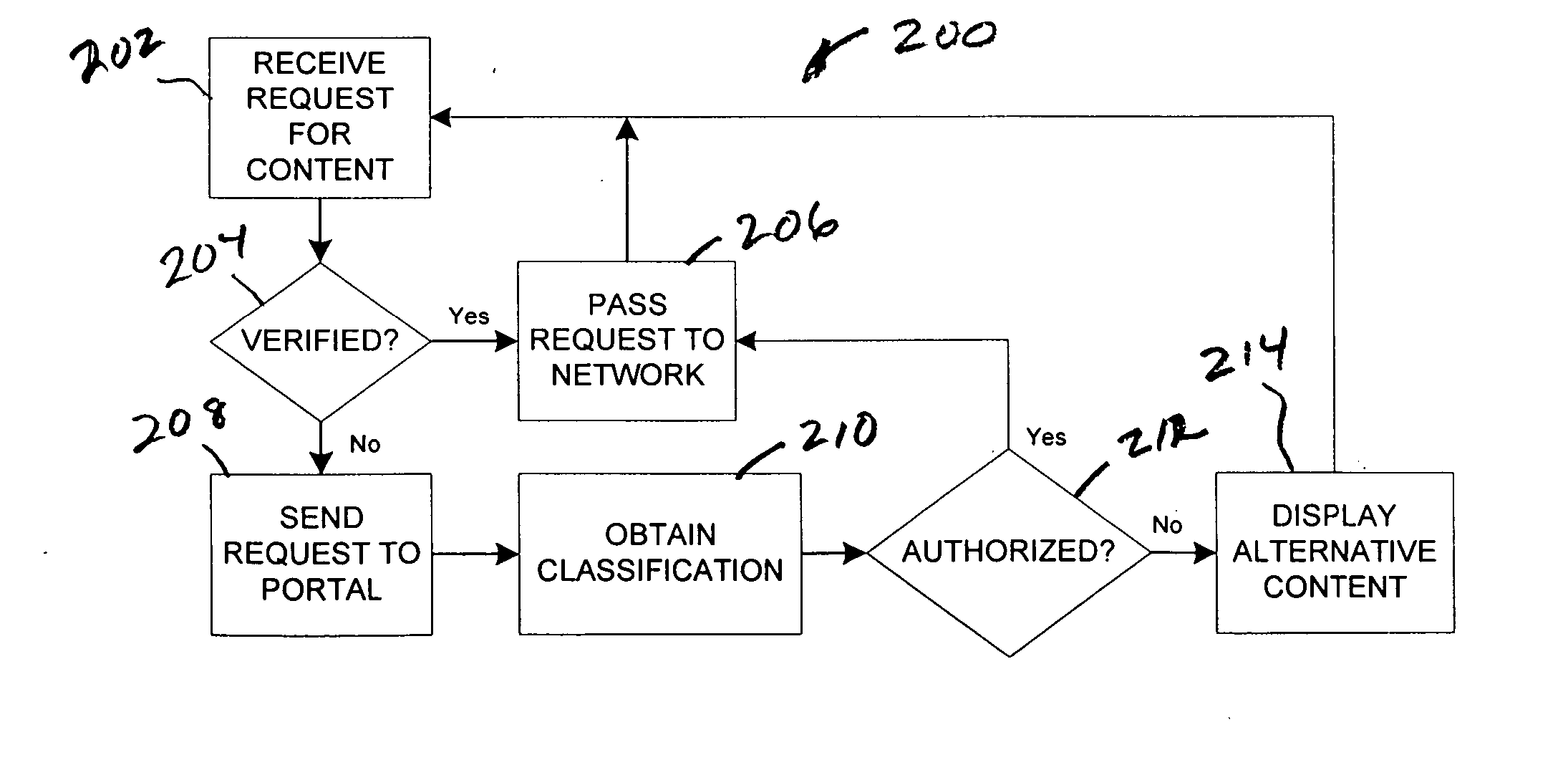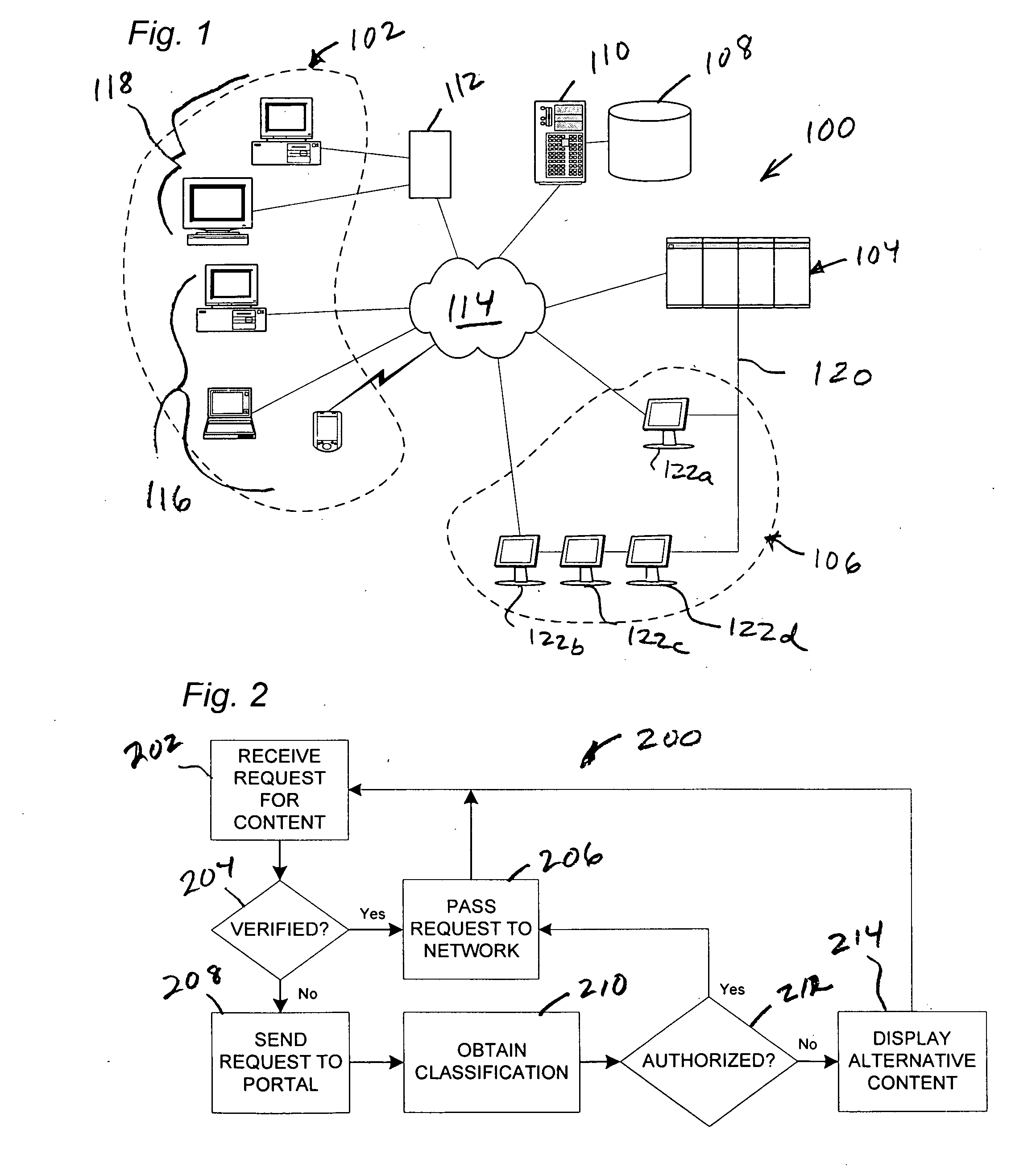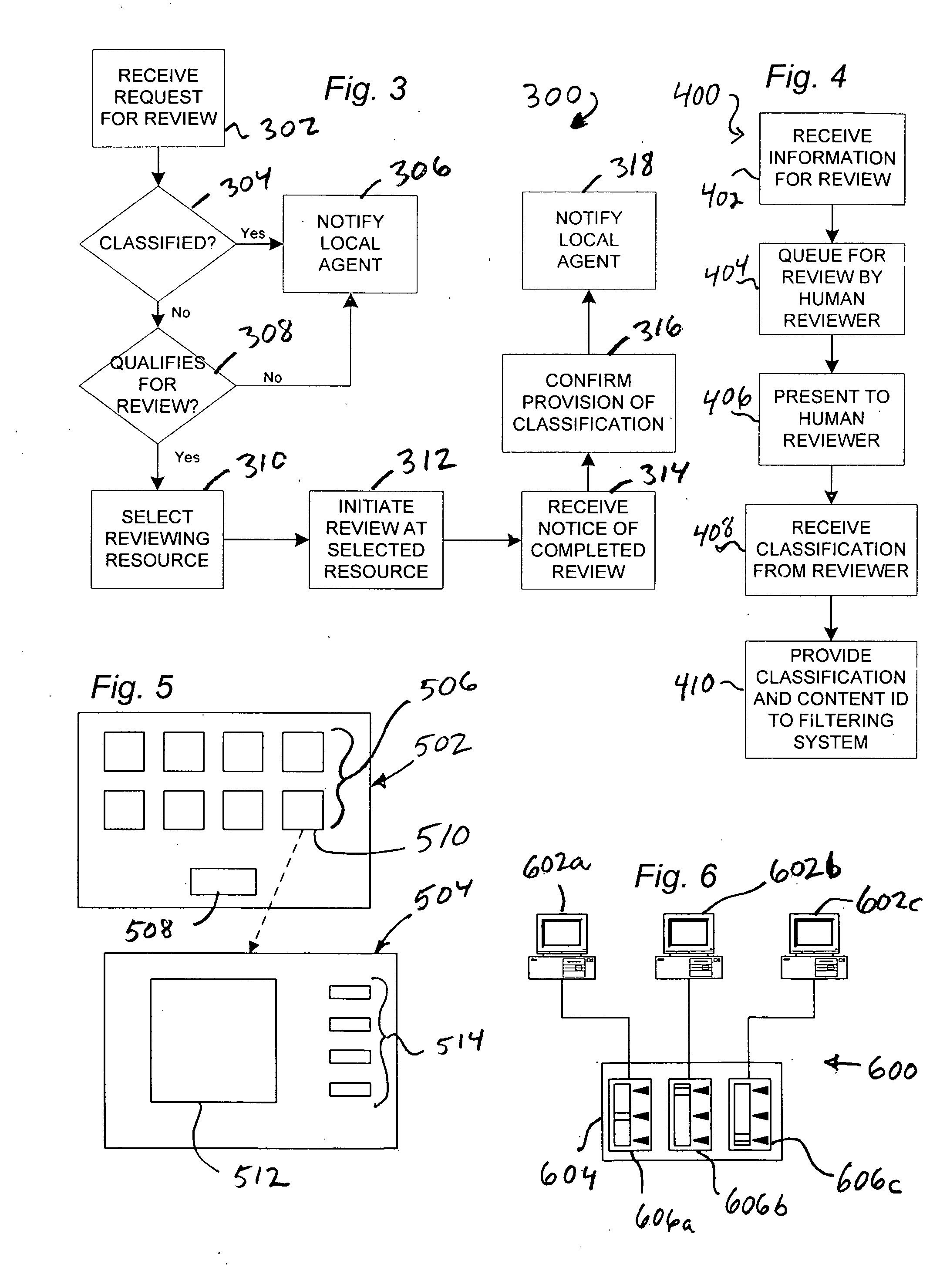Method and apparatus for content filtering
a content filtering and content technology, applied in the field of content filtering methods and apparatuses, can solve the problems of unnecessary further filtering, and achieve the effect of accurate filtering of undesired content and convenient adjustment of filtering
- Summary
- Abstract
- Description
- Claims
- Application Information
AI Technical Summary
Benefits of technology
Problems solved by technology
Method used
Image
Examples
Embodiment Construction
[0025] The present invention provides a method and apparatus for content filtering, that overcomes the limitations of the prior art. In the detailed description that follows, like element numerals are used to indicate like elements appearing in one or more of the figures.
[0026]FIG. 1 shows a system 100 for content filtering, comprising a plurality of client terminals (five of many shown) used by individual users to view content provided on wide area network 114 such as the internet, a portal 104 for handling requests for human review of content, a plurality of reviewing resources 106, and a content classification database 108. Any suitable computing and networking equipment may be used to construct system 100. FIG. 1 is intended to be illustrative, and not limiting, as to the specific types of devices employed.
[0027] System 100 further comprises a local filtering agent, which may reside as software on client terminals of the system, for example, on clients 116. In the alternative,...
PUM
 Login to View More
Login to View More Abstract
Description
Claims
Application Information
 Login to View More
Login to View More - R&D
- Intellectual Property
- Life Sciences
- Materials
- Tech Scout
- Unparalleled Data Quality
- Higher Quality Content
- 60% Fewer Hallucinations
Browse by: Latest US Patents, China's latest patents, Technical Efficacy Thesaurus, Application Domain, Technology Topic, Popular Technical Reports.
© 2025 PatSnap. All rights reserved.Legal|Privacy policy|Modern Slavery Act Transparency Statement|Sitemap|About US| Contact US: help@patsnap.com



